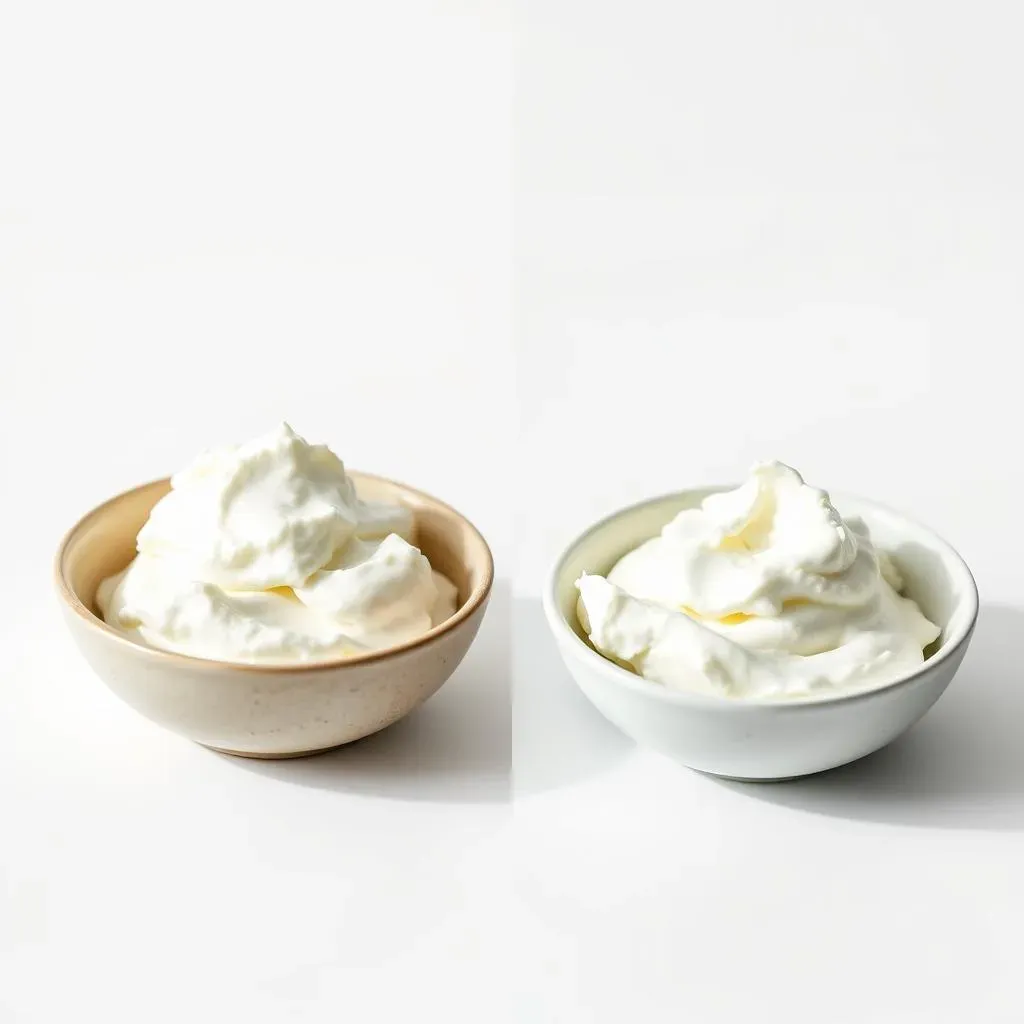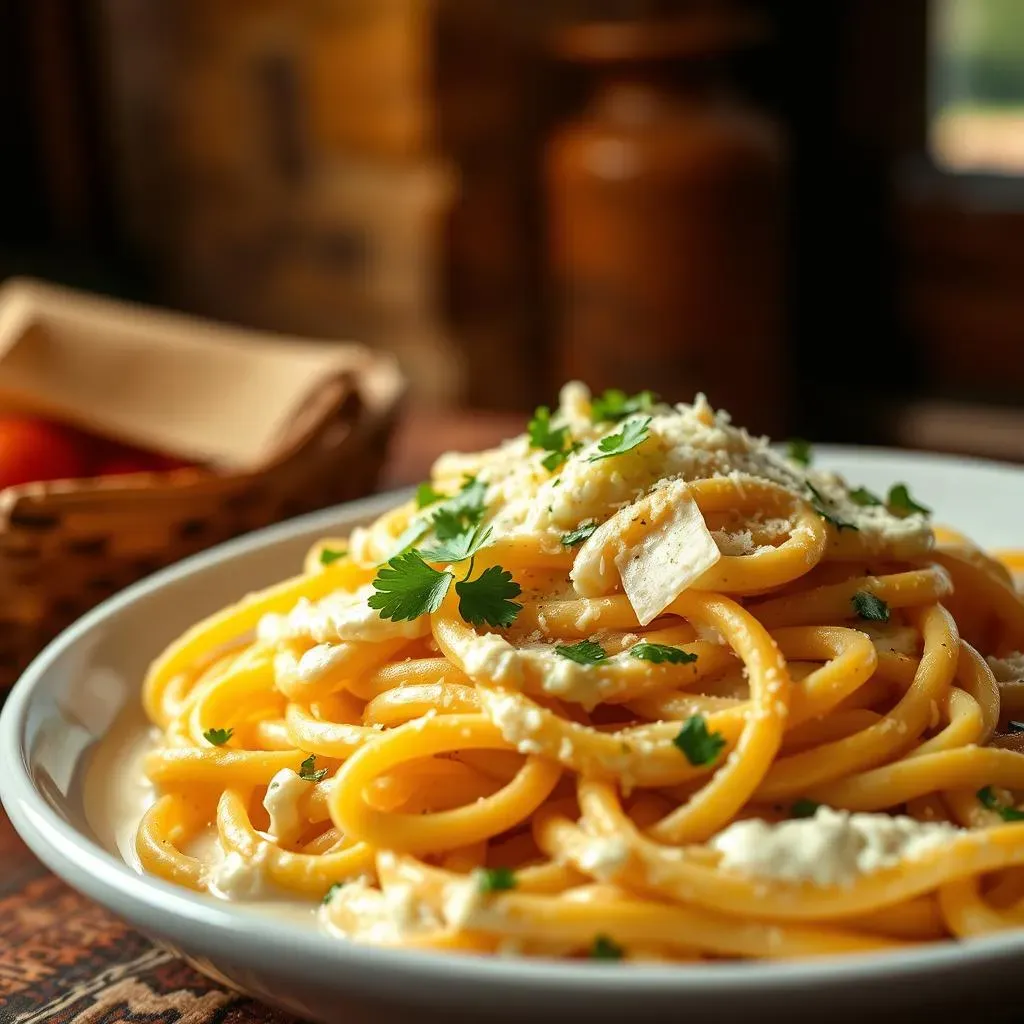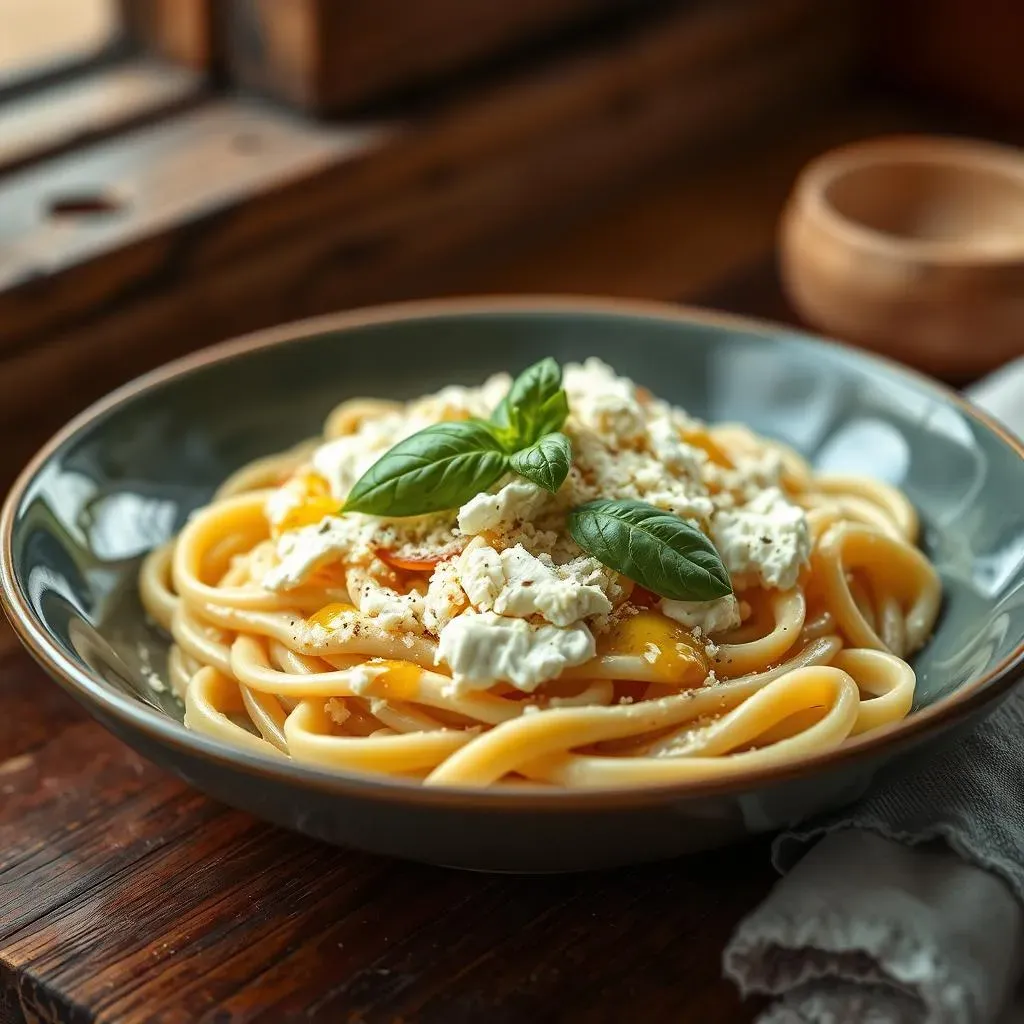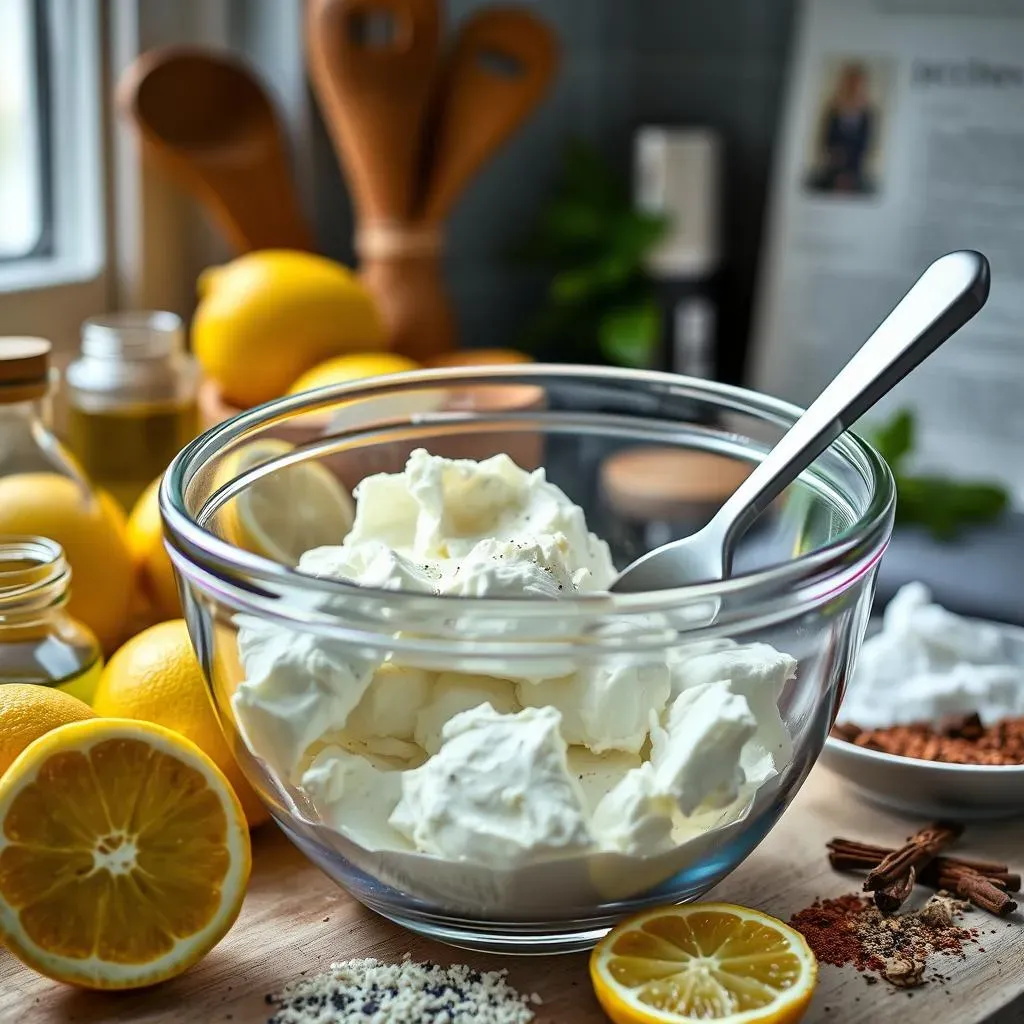Table of Contents
Ever stared blankly at a recipe, realizing you're missing a key ingredient – sour cream? Don't despair! We're diving into the surprisingly versatile world of sour cream substitutes, focusing on a creamy contender: ricotta cheese. The question burning in many home cooks' minds is: can ricotta be substituted for sour cream? The answer, as you'll soon discover, isn't a simple yes or no. This article will explore the subtle differences in taste and texture between ricotta and sour cream, revealing when a ricotta swap works wonders and when it might lead to culinary disappointment. We'll explore specific recipes where ricotta shines as a replacement, offering practical tips and tricks for achieving the best results. Get ready to unlock the secrets of successful ingredient substitutions and expand your culinary creativity! Let's find out if ricotta can truly stand in for sour cream in your favorite dishes.
Ricotta vs. Sour Cream: A Taste Comparison

Ricotta vs. Sour Cream: A Taste Comparison
Texture Tales
Sour cream boasts a smooth, creamy texture, almost like a thick, tangy yogurt. It's easily spreadable and melts beautifully. Ricotta, on the other hand, has a slightly more grainy texture, almost like a very fine-grained cottage cheese. While still creamy, it's not as smooth as sour cream and doesn't melt in the same way. Think of it as a slightly curdled creaminess. This difference in texture is crucial when considering substitutions, especially in baked goods where melting and spreading are key.
For instance, if you're baking a cheesecake and need that smooth, creamy texture, sour cream is your best bet. A heavy cream substitute might even be a better choice than ricotta. However, in a dip or spread where the texture is less critical, ricotta’s slightly grainy nature might not even be noticeable. The key is understanding the role texture plays in your recipe.
Ingredient | Texture | Melting Behavior |
|---|---|---|
Sour Cream | Smooth, creamy | Melts smoothly |
Ricotta | Slightly grainy, creamy | Doesn't melt smoothly |
Tangy Tango
Sour cream's signature is its tang – that delightful sourness that brightens up dips, sauces, and baked goods. It's a key flavor component, providing a welcome counterpoint to sweetness or richness. Ricotta, while not sour, possesses a mild, almost sweet, flavor. It's far less acidic than sour cream. This difference in tanginess is a significant factor to consider when substituting.
If your recipe relies heavily on the sour cream's tang, using ricotta might result in a dish that's less vibrant and flavorful. You might need to compensate by adding lemon juice or vinegar to boost the acidity. However, if you're looking for a milder flavor profile, ricotta might be a surprisingly good choice, especially in recipes where a strong tang isn't desired. Think about the overall flavor balance of your recipe before making the swap. A cream cheese swap might also be a good choice depending on the recipe.
- Sour cream: Tangy, acidic
- Ricotta: Mild, slightly sweet
Fat Factor
Both sour cream and ricotta are relatively high in fat, contributing to their creamy texture and richness. However, the type of fat differs. Sour cream is primarily composed of milk fat, giving it a rich, smooth mouthfeel. Ricotta, being a cheese, contains a blend of milk fats and proteins, resulting in a slightly different texture and mouthfeel. This fat content influences how each ingredient behaves in cooking and baking.
In recipes calling for a high-fat ingredient for richness and moisture, ricotta can often hold its own against sour cream. However, be aware that the different fat composition might subtly affect the final texture of your dish. For example, in a recipe that relies heavily on the fat content of sour cream for moisture, substituting ricotta might lead to a slightly drier result. Consider this carefully when choosing your substitute. Check out this article on substituting heavy cream with sour cream for more information about fat content considerations.
"The best substitute is often the one that best suits your recipe's needs and your taste preferences." - Anonymous Baking Enthusiast
When Ricotta Works as a Sour Cream Swap

When Ricotta Works as a Sour Cream Swap
Pasta Power
Ricotta's creamy texture makes it a surprisingly good substitute for sour cream in pasta sauces, especially those with a creamy or cheesy base. The slightly grainy texture blends seamlessly into the sauce, adding a subtle richness that complements the pasta. Think of creamy tomato pasta or a decadent four-cheese sauce. The mild flavor of ricotta won't overpower the other ingredients, allowing the other flavors to shine. In fact, ricotta can add a lovely depth and creaminess that enhances the overall experience. It's a fantastic way to add a boost of protein and creaminess to your favorite pasta dishes without the sharp tang of sour cream.
For instance, in a creamy pesto pasta, ricotta's mildness lets the basil and parmesan take center stage. This is a great option if you want a creamy pasta but prefer a less acidic final product. If you're looking for other creamy pasta options, consider checking out our guide on substituting sour cream for milk in similar dishes. You might be surprised at how versatile sour cream (and its substitutes) truly are.
- Pasta sauces (creamy tomato, four-cheese)
- Pesto pasta
- Lasagna fillings
Dip Delights
Ricotta's mild flavor and creamy texture make it a surprisingly versatile ingredient for dips. While it lacks the sharp tang of sour cream, its richness provides a satisfying base for dips that don't need a strong acidic note. Think spinach and artichoke dip, where the ricotta's creaminess blends beautifully with the other flavors. The slight graininess of the ricotta isn't overly noticeable and adds a pleasant textural contrast to the other ingredients. It's a great way to add a touch of luxury to your appetizer spread.
Remember that ricotta is naturally less acidic than sour cream. If you find your dip needs a bit more zip, a squeeze of lemon juice or a splash of white wine vinegar can easily elevate the flavor profile. Experiment with different herbs and spices to create unique and flavorful dips. For more ideas on substitutions, you might find our guide on substituting sour cream with yogurt helpful. You can find tons of similar options there as well.
Dip Type | Ricotta Benefit |
|---|---|
Spinach and Artichoke | Creamy base, mild flavor |
Seven-Layer Dip | Adds richness and creaminess |
Hummus (with additions) | Creamy texture, mild flavor |
Baking Bliss (with caveats)
While ricotta isn't a direct swap for sour cream in all baked goods, it can work in certain situations. For instance, in some cakes or muffins, ricotta adds moisture and richness without overpowering the other flavors. However, you might need to adjust the recipe slightly to account for the difference in texture and tanginess. Remember that ricotta doesn't melt in the same way as sour cream, so it might not be suitable for recipes where melting is crucial. You'll want to proceed with caution, and possibly test a smaller batch first.
The key is to choose recipes where the sour cream's tang isn't a defining characteristic and the slightly grainy texture of ricotta won't be a problem. For example, ricotta can work well in certain cheesecakes, adding a unique texture and flavor. Always read the recipe carefully before making a substitution and consider the overall effect on the final product. If you are looking for other baking options, explore substituting sour cream for buttermilk in baking. It's a good starting point for similar swaps.
Recipes Where Ricotta Shines as a Sour Cream Substitute

Recipes Where Ricotta Shines as a Sour Cream Substitute
Pasta Perfection
Let's talk pasta! Ricotta truly shines in creamy pasta sauces. Its mild flavor doesn't compete with other ingredients, allowing the sauce's other flavors to sing. Think creamy tomato sauce or a decadent four-cheese blend. Ricotta adds a luxurious creaminess and a touch of protein, making it a fantastic choice for a richer, more satisfying pasta dish. Forget that sharp sour cream tang; ricotta offers a smoother, more subtle experience. You'll find it blends beautifully into creamy pesto pasta, letting the basil and parmesan steal the show. For a lighter, less acidic pasta, ricotta is your new best friend!
Consider a creamy mushroom pasta, where the earthy mushrooms pair beautifully with ricotta's mild sweetness. The creamy texture coats the pasta perfectly, creating a delightful mouthfeel. For a similar creamy experience, but with a different flavor profile, check out our article on sour cream milk substitutes in scalloped potatoes. You might find some interesting parallels.
- Creamy Tomato Pasta
- Four-Cheese Pasta
- Creamy Mushroom Pasta
Savory Stuffed Shells
Stuffed shells are another area where ricotta truly shines. The creamy ricotta filling, combined with savory herbs and cheeses, creates a delightful balance of flavors and textures. The mildness of ricotta allows the other flavors to stand out while providing a rich and creamy base. This makes it an excellent alternative to sour cream in this type of dish. The ricotta adds a satisfying creaminess to the filling without overpowering the other ingredients.
If you're looking for a lighter, healthier option, consider using part-skim ricotta. You can still achieve that creamy texture without the extra calories. For other filling options, you might want to explore substituting cottage cheese for sour cream in similar recipes. This offers another creamy base, but with a slightly different texture and flavor.
Ingredient | Role in Stuffed Shells |
|---|---|
Ricotta | Creamy base, mild flavor |
Spinach | Adds freshness and nutrients |
Mozzarella | Adds stretch and saltiness |
Sweet and Savory Pancakes
Ricotta can add a delightful twist to pancakes! The addition of ricotta creates a deliciously tender and fluffy pancake, with a subtle sweetness that complements both sweet and savory toppings. The slight graininess adds a nice textural contrast to the smooth pancake batter, making for a more interesting eating experience. It's a unique way to upgrade your breakfast game!
For a truly unique flavor combination, try adding lemon zest and a touch of honey to your ricotta pancake batter. The bright citrus notes and subtle sweetness pair perfectly with the creamy ricotta. If you're looking for more pancake inspiration, check out our guide on sour cream buttermilk substitutes in banana bread. You might find some interesting ideas for similar recipes.
Troubleshooting Ricotta Substitutions: Tips and Tricks

Troubleshooting Ricotta Substitutions: Tips and Tricks
Adjusting for Acidity
Ricotta's mild nature means you might need to add acidity to mimic sour cream's tang. A squeeze of lemon juice or a splash of white wine vinegar can do the trick. Start with small amounts and taste as you go; you don't want to overpower the other flavors. Remember that the amount needed will depend on the recipe and your personal preference. A little goes a long way!
Think of it like seasoning – a pinch of salt here, a dash of pepper there. You can always add more, but you can't take it away! Experiment until you find the perfect balance of flavors. For more information on balancing flavors, you might find our article on cream cheese substitutions helpful. It tackles similar flavor challenges.
- Lemon juice
- White wine vinegar
- Apple cider vinegar (use sparingly)
Managing Moisture
Ricotta's moisture content can differ depending on the brand. Some are drier than others. If your recipe requires a drier consistency, you might need to drain some of the excess whey from the ricotta before using it. Conversely, if your recipe needs extra moisture, you may not need to drain it at all. The best approach is to always check the consistency of your ricotta before incorporating it into your recipe.
Pay close attention to the recipe's instructions and adjust accordingly. You can even use a cheesecloth to strain the ricotta for a firmer consistency. If you need more information on managing moisture in recipes, check out our guide on sour cream heavy cream swaps in baking. It covers similar moisture concerns.
Ricotta Type | Moisture Level | Action |
|---|---|---|
Wet | High | Drain excess whey |
Dry | Low | Use as is |
Texture Tweaks
Ricotta's slightly grainy texture might not be ideal for all recipes. If you need a smoother consistency, consider blending the ricotta with a bit of milk or cream before using it. This will create a smoother, more homogeneous texture, closer to that of sour cream. Alternatively, if you are looking for a more textured dip, you might leave it as is.
Consider the final texture you desire. Is it a smooth, creamy sauce, or a slightly chunky dip? Adjust your technique accordingly. For more ideas on achieving specific textures, you can explore Greek yogurt substitutions for sour cream. These offer a variety of textures depending on the type of yogurt used.